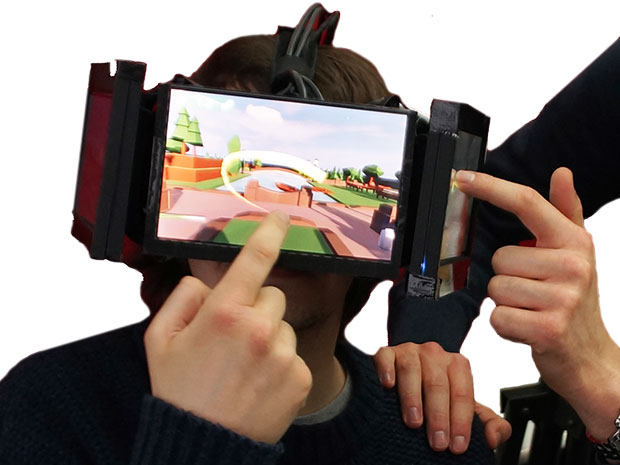If you had attended Asus’s press conference last year, all you will remember is the flashing of lights and camera on the special robot called the Zenbo. The smart robotic device which promised to be by your side for acting as smart home assistant, security guard, kids mate or even a photographer. While this was definitely a big change in the technology field, Asus changed its plans this year, decided to skip on anything robotic and went right with Asus super thin laptops!
Asus is today one of the leading IT technology brand with a perfect pairing of technology with the people’s lifestyle. Asus offers its customers the computer and mobile devices at great prices and competitive technology to win their hearts! In a recent press conference held at Taipei, Taiwan the focus was laid on the Asus super thin laptops with its special models added to the collection of ZenBooks – The Zenbook Flip S and The Zenbook Pro UX550. Both the models have been launched with the latest of technology developments and have a classic style. While the ZenBook Flip S is claimed to be the ‘World’s thinnest convertible laptops’ the Zenbook Pro UX550 comes as a gamer’s powerbox!
ZenBook Flip S: This 1.1kg convertible laptop has the power processor from Intel Core i7-7500U in touchscreen display of 4k and flips for a complete 360 degree. The thickness of the Asus ZenBook Flip S is about 10.9mm which was compared to the MacBook Air i.e. 1.35kg of 17mm and HO Spectre x360 i.e. 1.29kg with 13.8mm of thickness. It was found that indeed the Asus super thin laptop is the thinnest convertible laptop.
The ZenBook Flip S comes as a very fast performance laptop with 16GB RAM and 1TB SSD. The machine can stand by on battery for about 11.5 hours and reaches only 60% in 49 minutes. It uses USB-C port for the peripherals. The ZenBook is said to hit the stores for sale from September at a price starting $1099.
ZenBook Pro UX550: As amazing like its predecessor, the ZenBook Pro UX550 is a smart laptop of 15.6 with 4K touchscreen display which runs on the intel core i7-7700HQ seventh generation quad core processor, which has a 16GB DDR4 RAM, A graphic card and a Nvidia GTX 1050 Ti that makes it interesting device for the gamers. The ZenBook Pro UX550 has a weight of 1.8kg and 18.9 thickness with a slim profile. This model is said to be on the stores starting July at a price of $1299.
Along with these two premium Asus super thin laptops, there was an introduction of a few more models in the show! The list of other new launches included the ZenBook 3 Deluxe that was introduced as a part of CES in January. The VivoBook S with a i7 Core CPU paired up with Nvidia GTX 940MX GPU and the VivoBook which comes with a i7 Core CPU and Nvidia GTX 1050 GPU. The two models are priced at $499 and $799 respectively.
Asus is today one of the leading IT technology brand with a perfect pairing of technology with the people’s lifestyle. Asus offers its customers the computer and mobile devices at great prices and competitive technology to win their hearts! In a recent press conference held at Taipei, Taiwan the focus was laid on the Asus super thin laptops with its special models added to the collection of ZenBooks – The Zenbook Flip S and The Zenbook Pro UX550. Both the models have been launched with the latest of technology developments and have a classic style. While the ZenBook Flip S is claimed to be the ‘World’s thinnest convertible laptops’ the Zenbook Pro UX550 comes as a gamer’s powerbox!
ZenBook Flip S: This 1.1kg convertible laptop has the power processor from Intel Core i7-7500U in touchscreen display of 4k and flips for a complete 360 degree. The thickness of the Asus ZenBook Flip S is about 10.9mm which was compared to the MacBook Air i.e. 1.35kg of 17mm and HO Spectre x360 i.e. 1.29kg with 13.8mm of thickness. It was found that indeed the Asus super thin laptop is the thinnest convertible laptop.
The ZenBook Flip S comes as a very fast performance laptop with 16GB RAM and 1TB SSD. The machine can stand by on battery for about 11.5 hours and reaches only 60% in 49 minutes. It uses USB-C port for the peripherals. The ZenBook is said to hit the stores for sale from September at a price starting $1099.
ZenBook Pro UX550: As amazing like its predecessor, the ZenBook Pro UX550 is a smart laptop of 15.6 with 4K touchscreen display which runs on the intel core i7-7700HQ seventh generation quad core processor, which has a 16GB DDR4 RAM, A graphic card and a Nvidia GTX 1050 Ti that makes it interesting device for the gamers. The ZenBook Pro UX550 has a weight of 1.8kg and 18.9 thickness with a slim profile. This model is said to be on the stores starting July at a price of $1299.
Along with these two premium Asus super thin laptops, there was an introduction of a few more models in the show! The list of other new launches included the ZenBook 3 Deluxe that was introduced as a part of CES in January. The VivoBook S with a i7 Core CPU paired up with Nvidia GTX 940MX GPU and the VivoBook which comes with a i7 Core CPU and Nvidia GTX 1050 GPU. The two models are priced at $499 and $799 respectively.







